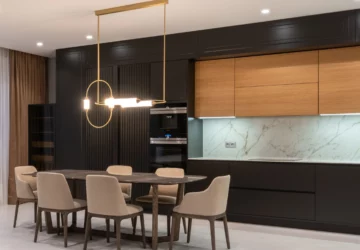Storyboarding: The Key to Unleashing Creativity in Today’s Design Thinking
In the dynamic field of design, storyboarding has established itself as a vital tool, integral to the design thinking process. As we reflect on the lessons and advancements of the past year, the importance of storyboarding in 2023 remains a testament to its enduring relevance. This method is not just a step in conceptualization but a gateway to creativity and clarity in design.

In the dynamic field of design, storyboarding has established itself as a vital tool, integral to the design thinking process. As we reflect on the lessons and advancements of the past year, the importance of storyboarding in 2023 remains a testament to its enduring relevance. This method is not just a step in conceptualization but a gateway to creativity and clarity in design. Let’s delve into the essentials of storyboarding in design, its compelling power, and how to effectively incorporate it into design thinking.
Why is Storyboarding Important in Design Thinking?
Storyboarding in design thinking serves as a vital bridge between abstract ideas and tangible realities. It facilitates a visual exploration of concepts, making them more comprehensible and relatable. This approach is pivotal in ensuring that designs are user-centric, helping designers to anticipate and address the needs and emotions of end users. It’s a tool that fosters empathy, a core principle of design thinking.
What is a Storyboard in Design?
At its core, a storyboard in design is a visual narrative, akin to a comic strip but geared towards designers and creatives. It’s a sequence of sketches, often accompanied by notes, that conveys a story – be it a user journey, a product’s functionality, or an advertising campaign’s flow. It sets the scene, delineates actions, and anticipates reactions, providing a clear preview of the intended outcome while highlighting potential challenges and opportunities.
The Power of Storyboarding
Storyboarding’s strength lies in its ability to transform abstract concepts into visual stories that are easy to understand and share. This not only enhances communication within teams but also aligns diverse stakeholders around a common vision. It’s a tool that sparks innovation, encouraging creative solutions. Additionally, storyboarding acts as a reality check, ensuring that creative ideas are not only imaginative but also practical and executable.
Creating a Storyboard in Design Thinking
Developing a storyboard in design thinking involves several key steps:
- Defining the Objective: First, determine the purpose of your storyboard. Is it to illustrate a user’s experience, showcase a product feature, or narrate a brand story?
- Sketching the Storyline: Begin with basic sketches to outline the narrative flow. These sketches don’t need to be artistically advanced; simple illustrations can effectively convey the message.
- Adding Contextual Details: Include elements that provide context, such as user emotions, environmental settings, or specific interactions.
- Iterative Refinement: Continuously review and refine your storyboard to ensure it aligns with your objectives and communicates the concept clearly.
- Feedback and Validation: Share the storyboard with others for feedback, making sure it effectively conveys the intended message and resonates with the audience.
Storyboarding in the Context of 2023
Reflecting on 2023, storyboarding has been an integral part of design thinking, bridging traditional storytelling techniques with modern design methodologies. It’s a practice that has seamlessly adapted to the integration of digital elements, from interactive designs to animated features, catering to the ever-growing demands for immersive and engaging narratives. As we move forward, the principles and practices of storyboarding continue to be pivotal in translating ideas into impactful, tangible creations.
In conclusion, storyboarding is more than a design step; it’s a strategic tool that empowers designers to visualize, communicate, and realize their creative visions effectively. It reaffirms the idea that visual storytelling remains a powerful medium in the realm of design and creativity, irrespective of the year or the evolving technological landscape.